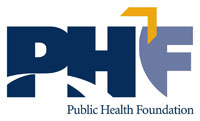Finding the right job is important, and for many people that means entering the health industry in one capacity or another. But there is a huge number of different job options out there in the health field, and spending the time needed to find the one that is right for you is important. One choice that is a bit different is that of the environmental health nurse. This position puts you in the thick of it, providing vital healthcare services exactly where it’s needed most.
Environmental health nurses work on improving the health of an entire population instead of on caring for a single patient at a time, and as such the job is one that fits many people perfectly. If you think a nursing position is right for you, but working to provide bedside care to patients in a hospital isn’t that appealing, read on to learn more about becoming an environmental health nurse.
What Is an Environmental Health Nurse?
An environmental health nurse is a nursing professional who focuses on identifying different issues in the environment that can have an impact on the health and wellbeing of those in the area. They work to address those issues through various means, with the ultimate goal of improving the health of a population by preventing illness and injury.
The environmental health nurse could focus on a variety of different environments. While it usually focuses on the broader term – on all of the different issues that may confront a population of a county or state – some environmental health nurses will actually focus more on issues within a particular building or facility and how it impacts workers in the facility.
Job duties for an environmental health nurse are diverse, and include the following.
- Identify potential issues within the environment that are linked to lower health and wellness in patients or the public.
- Work to develop programs or initiatives that reduce those risks.
- Provide educational materials to those who are at risk that will help them understand how to deal with the problem.
- Consult with others in the public health field or in the medical facility about the risks and potential solutions that may be used.
- Conduct follow up studies to examine whether or not the risks are still present.
- Develop charts and reports that can be used to accurately and clearly convey the information discovered in a study.
Nature of the Work
Environmental health nurses work in a number of settings. Primarily, they’ll work in either a work setting or a community setting. In work settings, they focus on improving health and safety of the worker population. In the community setting, they focus on improving safety and health in the community population.
Work is generally office based, though field work and gathering samples is also common. Office work will involve filling out reports and paperwork, analyzing information, and working to prepare reports that can be used to help change policies and procedures in various ways.
The specific nature of the work will vary based on the issues facing a population, the location you work, and whether you are in an occupational or community setting. But in all instances, the goals will be similar.
Education and Training
A bachelor’s degree in nursing is fast becoming the preferred option for registered nurses interested in initial RN licensure. And for any bachelor’s-prepared registered nurse, gaining additional specialized training through a master’s program and gaining experience in areas like critical care and public health can help open the door to roles in advanced practice nursing.
As of 2020, the median salary for registered nurses came in at $75,330, with the top ten percent earning more than $116,230 that year. Naturally, environmental health nurses most often find their niche working for state and municipal health and human services agencies. Earning a median of $84,490, RNs classified as working for government agencies of this sort did considerably better than even those working in more traditional settings like hospitals.
Across all practice settings, registered nursing will see steady job growth in the years ahead, with projections showing a 9% growth rate over the ten-year period leading up to 2030.
2020 US Bureau of Labor Statistics job market trends and salary figures for Registered Nurses based on national data, not school-specific information. Conditions in your area may vary. Data accessed January 2022.








